Kimchi school is also a large-scale center providing opportunities to
experience Korean culture in both Seoul and Jeju island.
Seaweed has roots and spreads on the rocks in the sea so it is called Haetae (海苔) in “Jasaneobo”.
Other documents have different names for seaweed. For instance, seaweed is Geontae(乾苔) in [Bonchogangmok] and Haeui(海衣) in [Gyeongsang-do Jiriji].
It seems that seaweed has been on the dining table of the Korean ancestors since the Shilla Dynasty. In “Annals of the Joseon Dynasty”, there was a record that Kim Yeo-ik of Taein-do, Gwangyang, Jeollanam-do succeeded in farming seaweed for the first time in the 18th year of King Injo (1640).
Seaweed is distributed in Korea (Jeju Island, South Coast, West Coast), China, and Japan. It begins to appear around October in the coast of Korea, breeds from winter to spring, and then gradually decreases and gone in summer.
Seaweed is classified into traditional seaweed, stone seaweed, and green seaweed depending on the processing method. Traditional seaweed is the most popular, the most distributed and the most consumed type.
The most consumed traditional seaweed is also known as “Chosun seaweed”.
Traditional seaweed is marinated then grilled. It will turn into the signature emerald green after grilling.
Rock seaweed has a net pattern and irregular structure.
Since it is rough and hollow, it is mixed with native seaweed to make “Bandolkim” which is highly preferred due to its great taste and aroma.
Green seaweed is made by mixing red algae and green algae to add flavor.
It is usually grilled over a fire and eaten with soy sauce to bring out the savory taste and unique flavor.
About 50 species of seaweed are distributed around the world, and about 10 species are distributed in the southern coast of Korea. Sesame seaweed, radiation-patterned seaweed, and rock seaweed (round seaweed, furry seaweed) are cultivated.
The plant is dark red in color and has a fan shaped body. It grows on the rocks. The breeding season is from September to April of the following year.
It grows mainly in areas with high concentration salt water. It is the main type of Korean seaweed. It has a broad oval shape.
It attaches to rocks like moss and mainly is found mostly in the South Coast, the breeding season is from October to March to April of the following year.
It is widely distributed in the east, west and south coast. This seaweed has a dark red, fan shaped body and attaches to the rocks reaching towards the sea.






Most of the records related to seaweed are oral tradition. It is said to begin around the Seomjin River, and in the areas of Gogeum-do, Yaksan-do in Wando, and Jeollanam-do.
It was 260 years ago that an old mother found a marine plant while collecting clams at the fishing port of the Seomjin River. The plant looked similar to bamboo and gave a great taste.
About 300 years ago, the governor of Hadong-gun said that while on a tour of the province, his courtiers learned the farming and manufacturing methods from Galdo residents.
About 300 years ago, during the reign of King Injo, a fisherman in Taein-gun, Gwangyang, Jeollanam-do, saw a marine plant attached to trees and washed away. Thus, they built trees to farm seaweed.
It is said that an old man from Yongjang-ri, Gogeum-myeon, Wando, saw seaweed attached to the palace and cultivated it.
About 100 years ago, a man named Kim Yu-mong of Jojodo Island, Wando-gun discovered by chance that many marine plants were attached to a tree floating on the shore. Since then he started to cultivate seaweed.
Like other seaweed, it is a good source of vitamin A because it contains many minerals such as sodium, potassium, calcium, phosphorus, and iron, and carotene. In addition, it contains relatively large amounts of riboflavin, niacin, and vitamin C. It has a red pigment called fucoerythrobin, which gives it a unique color, and dimethyl sulfide giving it a unique taste and smell. In particular, it contains glycine and alanine, which are amino acids with a sweet and greasy taste.
Particularly, seaweed contains 10 to 100 times more vitamin A than vegetables and 1400 times more than beef. It is essential for eye health, preventing vision loss and night blindness. It is also rich in taurine to prevent dementia.
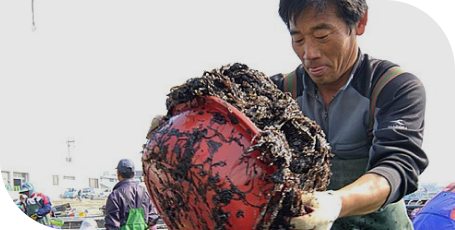
Seaweed near the shore is harvested after 45-60 days. Floating seaweed is harvested after 15-20 days.

Tough seaweed is chopped finely, and soft seaweed is cut into large pieces.
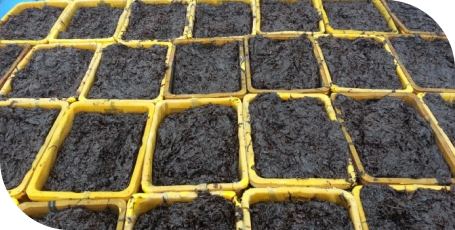
The seaweed is washed thoroughly until there is no red color water running out. Then, it is mixed and preserved in boxes.

Seaweed is scooped from the seaweed container into a wooden frame called ‘Gode’. It is spread evenly and thinly similar to the thickness of a paper.

A dehydrator is used to reduce the drying time and improve the quality of seaweed.

Outdoor drying method uses natural light while indoor drying method uses hot air.
It is a traditional and eco-friendly cultivation method. It is mainly used in places with shallow sea level and large tidal difference.
It is a method of farming by using floating objects called “gimbal”. This method is mainly used in deep sea level and the tidal difference is small. The “gimbal” is turned over every 4 days to prevent algae from attaching to it.






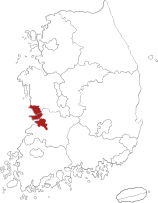
Sachen, Gunsan, Buan
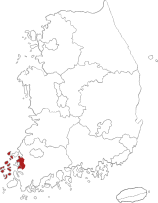
Shinan, Mokpo, Muan
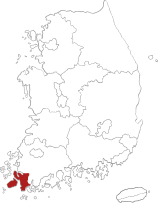
Haenam, Jindo
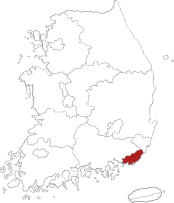
Busan
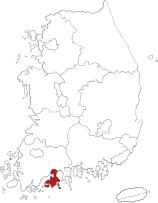
Goheung
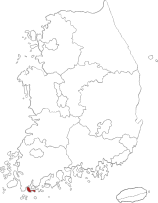
Wando